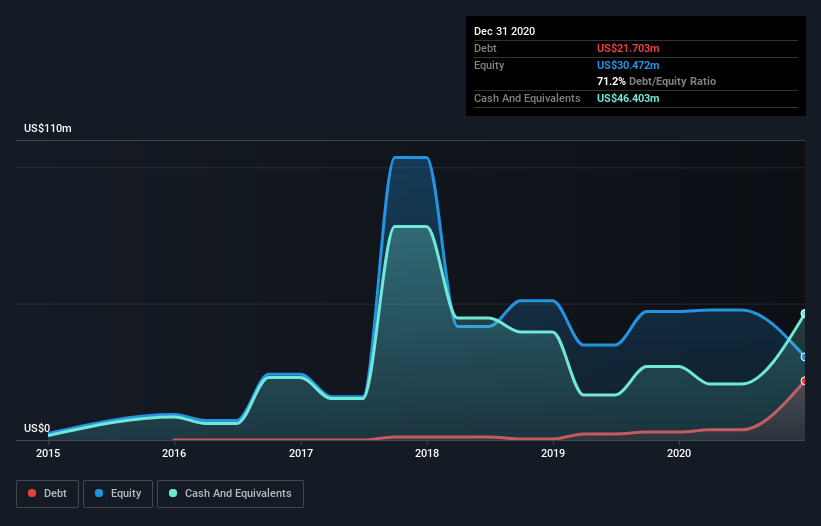Is Fluence (ASX:FLC) Using Debt In A Risky Way?
Some say volatility, rather than debt, is the best way to think about risk as an investor, but Warren Buffett famously said that 'Volatility is far from synonymous with risk.' It's only natural to consider a company's balance sheet when you examine how risky it is, since debt is often involved when a business collapses. Importantly, Fluence Corporation Limited (ASX:FLC) does carry debt. But the more important question is: how much risk is that debt creating?
What Risk Does Debt Bring?
Generally speaking, debt only becomes a real problem when a company can't easily pay it off, either by raising capital or with its own cash flow. If things get really bad, the lenders can take control of the business. However, a more usual (but still expensive) situation is where a company must dilute shareholders at a cheap share price simply to get debt under control. Having said that, the most common situation is where a company manages its debt reasonably well - and to its own advantage. When we examine debt levels, we first consider both cash and debt levels, together.
View our latest analysis for Fluence
How Much Debt Does Fluence Carry?
You can click the graphic below for the historical numbers, but it shows that as of December 2020 Fluence had US$21.7m of debt, an increase on US$2.91m, over one year. But on the other hand it also has US$46.4m in cash, leading to a US$24.7m net cash position.
How Strong Is Fluence's Balance Sheet?
Zooming in on the latest balance sheet data, we can see that Fluence had liabilities of US$81.6m due within 12 months and liabilities of US$42.7m due beyond that. Offsetting this, it had US$46.4m in cash and US$38.5m in receivables that were due within 12 months. So its liabilities total US$39.4m more than the combination of its cash and short-term receivables.
While this might seem like a lot, it is not so bad since Fluence has a market capitalization of US$79.6m, and so it could probably strengthen its balance sheet by raising capital if it needed to. But it's clear that we should definitely closely examine whether it can manage its debt without dilution. While it does have liabilities worth noting, Fluence also has more cash than debt, so we're pretty confident it can manage its debt safely. The balance sheet is clearly the area to focus on when you are analysing debt. But ultimately the future profitability of the business will decide if Fluence can strengthen its balance sheet over time. So if you want to see what the professionals think, you might find this free report on analyst profit forecasts to be interesting.
In the last year Fluence wasn't profitable at an EBIT level, but managed to grow its revenue by 61%, to US$97m. With any luck the company will be able to grow its way to profitability.
So How Risky Is Fluence?
Although Fluence had an earnings before interest and tax (EBIT) loss over the last twelve months, it generated positive free cash flow of US$21m. So although it is loss-making, it doesn't seem to have too much near-term balance sheet risk, keeping in mind the net cash. One positive is that Fluence is growing revenue apace, which makes it easier to sell a growth story and raise capital if need be. But that doesn't change our opinion that the stock is risky. The balance sheet is clearly the area to focus on when you are analysing debt. However, not all investment risk resides within the balance sheet - far from it. We've identified 2 warning signs with Fluence , and understanding them should be part of your investment process.
At the end of the day, it's often better to focus on companies that are free from net debt. You can access our special list of such companies (all with a track record of profit growth). It's free.
This article by Simply Wall St is general in nature. It does not constitute a recommendation to buy or sell any stock, and does not take account of your objectives, or your financial situation. We aim to bring you long-term focused analysis driven by fundamental data. Note that our analysis may not factor in the latest price-sensitive company announcements or qualitative material. Simply Wall St has no position in any stocks mentioned.
Have feedback on this article? Concerned about the content? Get in touch with us directly. Alternatively, email editorial-team (at) simplywallst.com.

 Yahoo Finance
Yahoo Finance 
